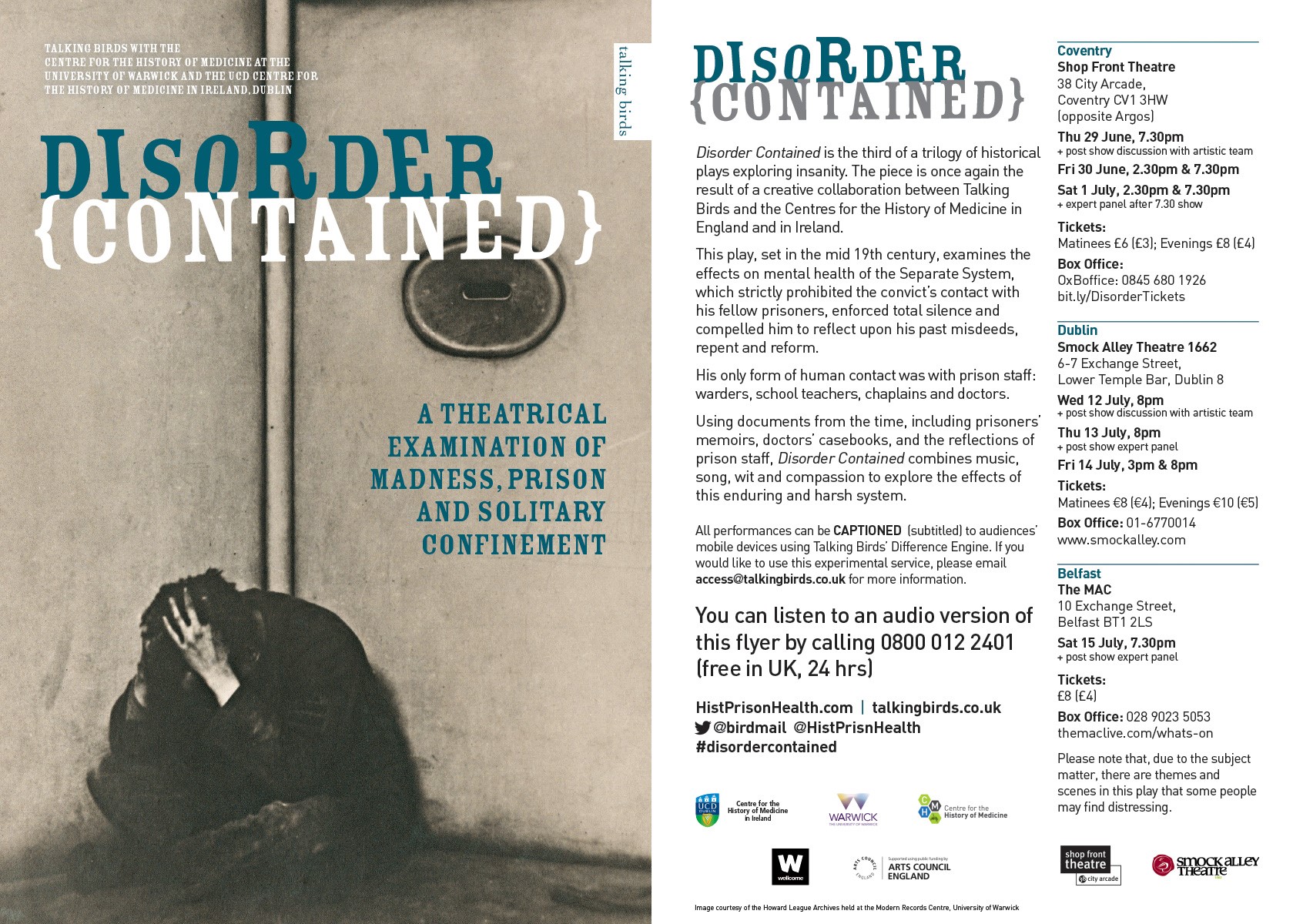Waterford Museum of Treasures, 26-27th June 2017
For further details please see: Holy Wells and Sacred Springs
The social significance of sacred water bodies and their associated traditions is now an emerging subject of study. One area where Irish scholars in particular are making great advances is the medical and curative dimension to these sites. These papers represent exciting new research taking place across Ireland into the various ways holy wells and their landscapes have played and continue to play a role in approaches to health and wellbeing.
Healing Waters and Therapeutic Landscapes
North Leinster Holy Wells: A Medical Geography – Ronan Foley, Maynooth University
One of the primary reputations of holy wells is their function as curative sites. Medical/health geographers are equally interested in the idea of therapeutic landscapes, places or spaces with established reputations for health and healing. With increased access to spatial information on the location of holy wells, and a parallel development in the mapping of folklore sources about specific cures, it has become possible for the first time to create a medical geography of holy wells in Ireland. Sources vary from traveller’s accounts and local historical sources to material from the Schools Collection and more recent surveys and ethnographic site visits. This paper describes the spatial distributions of specific cures in North Leinster as a representative location and considers the extent to which some wells had quite specific named curative powers, while others were panaceal. In addition, the location of the different cures across time and space will complement ongoing work at Trinity College Dublin on scientific testing of the waters to see if local geographical conditions can in part explain their distribution. Finally, the use of GIS and other geo-spatial mapping approaches identify the ongoing ways in which holy wells databases can be developed to promote the preservation of their narrative histories and ongoing curative performances.
Dr Ronan Foley is a Senior Lecturer at the Department of Geography at Maynooth University, Ireland. He has written extensively in the broad area of therapeutic landscapes, including Healing Waters: Therapeutic Landscapes in Historic and Contemporary Ireland (2010). He is currently the PI on an Irish Environmental Protection Agency project on Green/Blue Spaces and Health & an advisory partner on an ESRC project at the University of Exeter on Sensing Nature.
Tobair beannaithe agus ‘an leigheas’: Holy Wells and ‘the cure’ in 20th Century Ireland – Carol Barron, Dublin City University
The Schools Manuscript Collection of 1937-38, housed in the Folklore Department in UCD is believed to be the largest single medical folklore collection in Europe, and offers us a unique insight into the believes, practices and rituals surrounding ‘the cure’ and Holy wells in 20th Century Ireland. This paper examines a subsection of over 7,500 ‘cures’ sampled from the Schools Manuscript Collection from each barony of each of the 26 counties of Ireland, of which over 250 ‘cures’ are specific to Holy wells. This shared socio-cultural phenomenon is critically examined from a folkloristic/anthropological perspective, focusing on the specific disease states and their cultural importance to the health of Irish society at the time of recording and through history.
Dr Carol Barron is a lecturer in the Department of Nursing and Human Sciences at Dublin City University. She received her PhD in Anthropology from NUI Maynooth and her research focusses on child health. In particular, she has conducted extensive investigation into the use of Irish folk cures.
Well-being: Holy Wells as Emergent Therapeutic Spaces – Richard Scriven, University College Cork
Applying the concept of therapeutic landscapes to holy wells, this paper examines these sites as spaces of wellbeing that are forged through the interactions of people and place. Holy wells can be appreciated as sources of health offering spiritual and emotional support to individuals and communities. These experiences are generated in the meeting of bodies and practices, location and materials, and beliefs and emotions. Within these processes, well-being emerges with the site rather than being taking from it: there is a ‘taking place’ of health and wellbeing. Drawing on my fieldwork at holy wells across Munster, I explore the practices and meanings that contribute to the creation of these spaces of wellbeing and offer speculations on further engagements with this arena.
Dr Richard Scriven is an Irish Research Council Government of Ireland Postdoctoral Fellow in the Department of Geography, UCC. His research examines pilgrimage in contemporary Ireland as a socio-cultural phenomenon.
Holy Wells: The Evidence from Ulster – Finbar McCormick, Queen’s University
The experience of attending holy wells was composed of two main components, health and penance. While the curative nature of the wells is generally emphasised, the great majority of those who attended sites were not suffering for sickness or disability, - “every face beaming with the glow of health” as one observer noted. The main aim was to ensure the maintenance of good health for the coming year. This aspect of the ritual often involved washing or bathing in the well’s waters something that has for the most part disappeared in modern holy well rituals. The earliest place-name evidence for holy wells in Ulster and elsewhere, dating to the early Medieval period, indicates their association with health. It is likely that the penitential aspect of the wells is a later development. This paper considers a chronology for understanding the layered meanings of holy well rituals in Ulster.
Dr Finbar McCormick teaches Archaeology at Queen’s University Belfast and has recently been researching and excavating Struell wells in County Sown. Struell contains the most extensive set of buildings associated with a holy well in Ireland and can be documented back to the early Medieval period.
Further Details
Please see: Holy Wells and Sacred Springs


